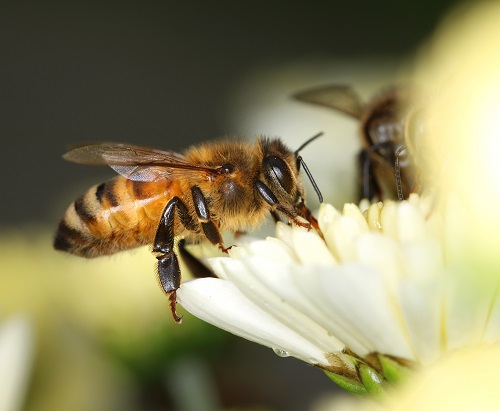Honey Bee Discovered to Have No Mom and Two Dads
December 10, 2018
In a first-ever documented case, scientists have discovered a female honey bee with two fathers but no mother to speak of. Known to be haplodiploid, the honey bee system of gender determination is that females are the result of fertilized eggs whereas males come from unfertilized eggs. However, in one or two percent of instances, a different system emerges called "sex mosaics.” These types of honey bees are gynandromorphs, which develop through different cell lines of origin and sex. According to Sarah Aamidor of Australia’s University of Sydney, she and her colleagues investigated gynandromorph honey bees in order to better comprehend honey bee reproduction and its flexibility.
While researchers know that gynandromorphs emerge due to genetic mutations, why and how it happens has never been clear. With mammals, sperm enters the egg to fertilize it, forming a chemical reaction that keeps other sperm out. However, honeybees can have more than a single sperm enter, which is a process called polyspermy. This is what typically occurs in gynandromorphs—multiple sperm enter the egg before fusing with the cell cluster. Per Aamidor, “[They then] begin to divide and thus become part of the developing embryo.”
In Aamidor’s study, published recently in the Royal Society Biology Letters, her team performed an investigation of 11 gynandromorph honey bees from one colony. For every bee, they imaged, dissected, and gathered tissues from various body parts, analyzing the tissues individually and extracting DNA. Many of the specimens had three to four parental lineages, with one mother and two to three fathers. However, just one honey bee was the result of no mother and two fathers, lacking any maternal genetics whatsoever, and the researchers suspect this happened via two sperm fusing together.
Per Aamidor, “This is the first report of a phenomena of a bee with two fathers and no mother in hymenoptera. In mammals, an embryo can't develop from two fathers (or mothers), so it was indeed surprising. This phenomenon is possible due to honey bees being polyspermy and, as this work shows, extremely flexible in the way they fuse their genomes, which may be due to them being haplodiploid.”
Discovering live bees from four parents and a female bee created by two sperm provides new understanding into the sheer flexibility of honey bee reproduction. In concluding, Aamidor’s team also said this flexibility could be found in similar haplodiploid insects, such as wasps and ants. "Beyond these already known examples, there are likely to be equally extraordinary social systems that have not yet been identified or even imagined," the team wrote.
Photo By Anterovium


.jpg)




